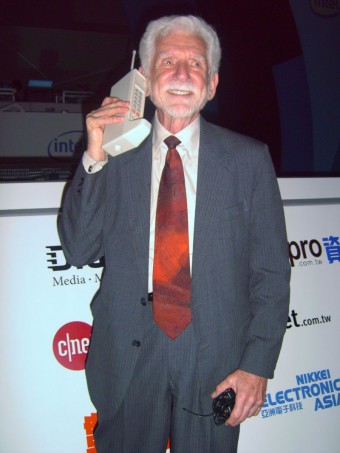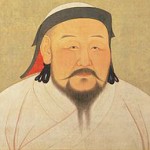Monday 5 October 2015
Medical Science
No.QuestionAnswer01An infection of the gums involving margin of the teeth with the gum is known asPyorrhoea02Drugs which reduce tension,anxiety,depression,etc. are known asTranquillizers03A swelling of the thyroid gland is known asGoitre04Typhoid fever is caused bySalmonella typhi bacteria05Plague was also known asBlack death06AIDS stands forAcquired Immune Deficiency Syndrome07Diseases which spread by contact are calledContagious diseases08Scarlet fever is caused byStrepto coccus09The sterilization technique carried out on men isVasectomy10The ability of a living creature to resist the attack of diseases is known asImmunity11How many senses a human being hasFive12Medical practioners without valid licence are calledQuacks13In a human baby,teething process starts from the ageSeven months14A method of treating cancer or tumor growth using chemicals is known asChemotherapy15Meningitis is caused byNeisseria meningitis16Tetanus is caused byClostridium tetane17Leukemia is commonly known asBlood Cancer18An area of pus formation within the lung is calledLung abscess19Meningitis is an infection ofHead and spinal cord20A sudden interruption of the blood supply to the brain can cause aStroke21A hereditary lack of pigment in the skin,hair & eyes is known asAlbinism22Psoraisis is an inherited disease ofSkin,nails and joints23A fungus is aMicroscopic plant24A condition in which both eyes do not point in the same direction is called asSquint25Short sightdness is also known asMyopia26Short sightdness isConcave lens27Long sightdness is also known asHypermetropia28Long sightdness is corrected by usingConvex lens29A condition in which one is not able to see both near and distant objects is known asPressbyopia30Both convex and concave lens is used to correct the eyesight of a person suffering fromPressbyopia31An inflammation of the thin membrance that covers the black part of the eye is calledConjunctivitis32Acute conjuctivitis is commonly known asblack eye33How many bones an adult human body has20634How many bones an human baby's body has27035Blood vessels that carry blood from different organs to the heart are known asAneries36Blood vessels that carry blood from different organs to the heart are known asVeins37The main artery of the body is theArota38Skin is the sense organ forTouch39Eyes are the sense organ forSight40Nose is the sense organ forSmell41Tongue is the sense organ forTaste42Ears are the sense organs forHearing43Muscles of the heart are calledCardiac muscles44In a human body,about how many muscles are there65045A break in the continuity of a bone is called aFracture46A progressive weakening of muscles is calledMuscular dystrophy47Damage to a nerve is termd asMeuropathy48Biceps are the muscles of theArm49Malaria is transmitted byAnopheles mosquito50There are how many types of MalariaThree51BCG stands forBacillus Calmette Guerin52BCG is a vaccine given for immunization against the diseaseTuberculosis53DPT is aTriple vaccine54DPT is effective againstDiphtheria,whooping cough and tetanus55DPT vaccine is given how many times to childrenThree56Vaccine against polio is calledPoliomyelitis vaccine57Vaccine is a liquid containingDilute or dead pathogens58The first antibiotic discovered byPenicillin59Spherical shaped bacteria are calledcoccus60Rod shaped bacteria are calledBacillus61Spiral shaped bacteria are calledSpirillium62Comma shaped bacteria are calledVibrio63The size of a virus is aboutA millionth of a centimeter64Plague is caused by bacteria which is found inFleas on the bodies of rats65Dengue fever is also known asBreak-bone fever66Q fever was first noticed inQueensland67Anthrax is caused byAnthrax bacillus68Cholera is caused byVibrio choleral bacteria69Tetanus is also known asLockjaw disease70Diptheria is caused byKlebs-loeffler71Whooping cough is caused byBordella pertussis72Sex is predicted before the birth of the child by a test calledAmnio centesis73The outer layer of the skin is calledEpidermis74The inner layer of the skin is calledDermis75Over exposure to sun causeSun burn76LSD stands forLysergic acid Di-ethylamide77Drugs which produce total unconsciousness are known asGeneral anaesthetics78Drugs which produce loss of sensation in a small area where the drug is applied are calledLocal anaesthetics79Drugs which neutralize secretions of the stomach which cause ulcers and acidity are calledAntacids80ELISA technique is used to detectAIDS81NMR stands forNuclear Magnetic Resonance82Teeth are covered by a hard substance calledEnamel83Insulin is also known asAnti-diabetic hormone84Insulin deficiency causesDiabetes85Inflammation of the pancreas is calledPancreatitis86A normal pregnancy lasts for about40 weeks87The device which improves one's hearing is calledHearing aid88Persons who are having blood group O positive are calledUniversal donors89Persons who are having blood group AB positive are calledUniversal recipients90Red cells of blood containHaemoglobin91The formation of a blood clot within a blood vessel is calledThrombosis92The sex hormone of the male isAndrogen93The sex hormones of the females areEstrogen and progesterone94Delivery of more than one baby at a time is called asMultiple pregnancy95A pregnancy that ends before the 28th week is termed asMiscarriage96A condition where the lung tissue collapses is known asAtelectasis97A condition in which the lung tissue loses its elasticity is known asEmphysema98Pnemonia is an infection of theLungs99Pus formation in the lung is calledLung abscess100Bronchiectasis is a disease of the which systemRespiratory101The colour of the skin is dependant upon a pigment calledMelanin102Eczema is a disease of theSkin103A condition wherein the pressure within the eyeball is increased above normal is calledGlaucoma104The number of teeth in a normal human being are32105Substances that cause allergy are calledAllergens106Hay fever is a type ofAllergy107Leukemia is a disease of theBlood108Tissue taken from the patient while operation is going on is calledFrozen section109EEG stands forElectro encephalography110EEG is used to record the activities of theBrain111EMG stands forElectromyography112EMG is used for recording for the activity of theMuscles during contraction113The x-ray visualisation of a joint is known asArthrography114A device used to regularise irregular heart beats is calledPace-maker115A doctor who is a specialist in matters related to the heart and circulatory system is called aCardiologist116In medical terminology,ENT stands forEar,nose and throat117A gynaeclogist specialises in matters related toReproductive system118Copper T is a type of device used forContraception119A Psychiatrist specialises in matters related toMental disorders120Typhoid vaccine was invented byAlmorth Writht121Polio vaccine was invented byJonas Salk122Contact lenses were invented byA.E.Fick123Vaccination was invented byEdward Jenner
Electronics and Computers
No.QuestionAnswer01The unit of frequency isHertz02The unit of resistance isOhm03The device which makes or breaks a circuit isSwitch04The path of an electric current is known as aCircuit05Device which opposes the flow of electric current is known asResistor06Arc Lamp was invented byC.F.Brush07Television was invented byJ.L.Baird08Transistor was invented byJ.Bardeen,W.Shockley and W.Brattain09The unit of wavelength of light isAngstrom10A device which converts light into electricity is known asPhoto cell11Hertz was the first to discoverRadio waves12Marconi inventedRadio13In 1901,Marconi beamed a signal from Cornwall in England toNewfoundland14Thomas Edison was anAmerican inventor15A glass tube with two electrodes is called aDiode16Lee de Forest was anAmerican scientist17Lee de Forest discovered theTriode18Radio and television transmit signals usingElectromagnetic waves19To turn pictures into electrical signals,television Cameras rely onPhoto-electric effect20Transistor was invented in the year194821The first electronic components invented were theThermionic valves22Microchip was invented in the year195823Microchip was invented byJack Kilby24The microchip invented first was also the firstIntegrated circuit25Silicon and germanium are ideal examples ofSemi conductors26LED stands forLight Emitting Diode27The first computer was invented in the year183428The first computer was invented byCharles Babbage29The first computer invented was calledAnalytical Engine30In the present day electronic machines,computers function asArtificial brains31CAD meansComputer Aided Design32CPU stands forCentral Processing Unit33RAM stands forRandom Access Memory34J.J. Thomson was aBritish physicist35In 1897,J.J.Thomson discoveredElectrons36A device used for increasing the strength of electric signal is calledAmplifier37The height of a wave is calledAmplitude38An electron carries a chargeNegative39In a transistor,a base is theFilling in the semiconductor sandwich40The tube behind the screen in TVs and most computers is calledCathode Ray Tube41The force which makes an electric current is calledElectromotive Force42Device used for measuring small amounts of electric current is calledGalvanometer43Sound too low to be heard by humans is calledInfrasound44VDU stands forVisual Display Unit45One kilobyte is approximately1000 bytes46DOS stands forDisk Operating System47WORD STAR is a popularWord processing programme48WORD STAR was developed byMicro pro Company49PC stands forPersonal Computer50ALU stands forArithmetic Logic Unit51The VDU and Keyboard together form aTERMINAL52The speed of the dot matrix printers is measured by CPS which stands forcharacters per second53The speed of the line printers is measured by LPM which stands forLines per second54DBMS stands forDatabase Management System55IBM is a famous computer company.IBM stands forInternational Business Machines Corporation56ROM stands forRead Only Memory57The actual machine of the computer is commonly known asHardware58The programs run on the computer are commonly known asSoftware59All the output which is printed on paper is calledHard Copy60The number of pixels on a computer screen determines a screes'sResolution61A processor's speed is measured inMegahertz62A software that assists the computer in performing instructions,is called assystem software63CAM stands forComputer Aided Manufacturing64DPI stands forDots per Inch65DTP stands forDesk Top Publishing66EPROM stands forerasable and Programmable Read only Memory67A magnetic storage disk made out of a thin piece of plastic is calledFloppy Disk68A pictorial representation of the step by step sequence for solving a problem is known as aFlow Chart69A measure of storage capacity equal to one thousand megabytes is oneGigabyte70A variable whose value is accessible throughout the program is calledGlobal Variable71A huge,worldwide network of computers that communicate with each other,allowing global communications between users is known popularly known asInternet72KB stands forKilobyte73LAN stands forLocal Area Network74A printer which uses light to transfer the image to paper is theLaser Printer75Memory which retains all its contents even after the power is turned off is known asNon-Volatile Memory76The result that is generated by the computer after processing the information provided to it is known asOutput77Electronic mail is more popularly known asE-Mail78PILOT stands forProgrammed Inquiry Learning Or Teaching79PILOT was developed byDoug Engelbardt80IQL stands forInteractive Query Language81LOGO was developed byDr.seymour Papert82CAL stands forComputer Assisted Learning83APT stands forAutomatically Programmed Tooling84`C'language was invented byDennis M.Ritchie85Modula-2 was developed byNiklaus Wirth86Terminals that have their own memory are calledSmart terminals87The memory that needs electric power to sustain its contents is known asVolatile Memory88MOS stands forMetallic Oxide Semiconductors89Dvorak key board was designed byAugust Dvorak90A simple device which functions as a simpler alternative to the keyboard is theMouse91Automatic drawing input device is calledScanner92In the second generation computers,magnetic cores were used asMain Memory Devices93LCD stands forLiquid Crystal Display94RADAR stands forRadio Detection and Ranging95RADAR works on the principle ofEcho96software-in-Hardware modules are calledFirmware97A device by which any microcomputer can use ordinary television set for producing output is calledRF modulator98EDSAC stands forElectronic Delayed Storage Automatic Computer99EDVAC stands forElectronic Discrete Variable Automatic Computer100EDSAC was developed in the year1949101EDVAC was developed in the year1952102ENIAC stands forElectronic Numerical Integrator and Calculator103The most successful computing device in the ancient time wasAbacus104Use of some mechanism for the operation of a machine is known asAutomation105Radar contact with the moon was first made in1945106Radar contact with Venus was first made in1961107A system in which information is displayed on a television screen is known asVideo Text System108A modern means of communication in which the information is stored in a computer at a TV station is known asTeletext109Global communication became possible by usingSatellites110Morse code was invented bySamuel Morse111The code used in a teleprinter is theBaudot Code112Teleprinter exchange is popularly known asTelex113A device which converts sound waves into electrical waves is calledMicrophone114AVC stands forAutomatic Volume Control115The device used to measure wavelengths of radio waves isWavemeter116A hollow metallic tube used in place of wire in electric circuits carrying high frequency currents is calledWaveguide117An instrument used to measure the intensity of radiations is theRadiometer118An instrument used to measure electrical voltage is theVoltmeter119VTVM stands forVacuum Tube Volt Meter120A circuit which maintains a constant voltage is calledVoltage Stabilizer121SCR stands forSilicon Controlled Rectifier122A device used to increase or decrease electric voltageis called aTransformer123A magnetic tape that records both audio and video signals is called aVideo Tape124The first electronic calculator was manufactured in 1963 byBell Punch Company,USA125MASER stands forMicrowave Amplification by stimulated Emission of Radiation126A computer which can handle a large volume of numbers is called aNumber cruncher127POST stands forPower on Self Test128POST is a test carried out just after the computer has beenSwitched on129An index of the files stored on a disk is calledDirectory130CP/M stands forControl program for Microcomputers131CP/M was developed bydigital Research Inc.,USA132MVS stands forMultiple Virtual Storage Operating System133MVS is used inMainframe computers134The process of starting a computer is calledBooting135A group of four binary digits is called aNIBBLE136BPI stands forBit per Inch137A smart card is amultifunctional microprocessor138LIPS stands forLogical Inferences Per Second139A computerized machine is normally called aRobot140A robot is a machine directed by aComputer141A robot which resembles a human being is called anAndroid142PL/1 stands forProgramme Language-1143The language PL/1 has combined features ofCOBOL and FORTRAN144BASIC stands forBegineers All Purpose Symbolic Instruction Code145COBOL stands forCommon Busines Oriented Language146ALGOL stands forAlgorithmic Language147ALGOL was developed in the early 1960s inEurope148COBOL was first introduced in the year1961149FORTRAN stands forFormula Translation150FORTRAN was developed and introduced by IBM in the year1957151PL/1 was introduced in the 1960s byIBM152COMAL stands forCommon Algorithmic Language153BASIC was developed byJohn Kemeny and Thomas Kurtz154SNOBOL stands forString Oriented Symbolic Language155SNOBOL was developed in1962156LISP stands forList Processing Language157LISP was developed byJohn McCarthy158Loud speaker was invented byRice Kellogg159PROM stands forProgrammable Read Only Memory160Two types of RAM chips areDynamic,static161Data is fed into the computer by first converting it into
FIVE WAR HEROES WHO ALSO HAPPENED TO BE DOGS
Heroes come in many forms; some are even furry and four-legged. Due in part to their superior ability to sniff and hear trouble, dogs have long been a fantastic ally and a great protector of humans. After all, it was Lassie who, through a series of barks, told the grown-ups that Timmy was in trouble again (Note: Timmy never actually fell down a well. Mineshaft, sure, but no well.) Dogs can also be quite brave and have been known to run into dangerous situations without a moment of hesitation. Throughout history, several dogs have gained a reputation as being courageous in wartime.
Here are the stories of five such dogs that became war heroes and helped saved human lives:
Gunner – Australia’s Alarm
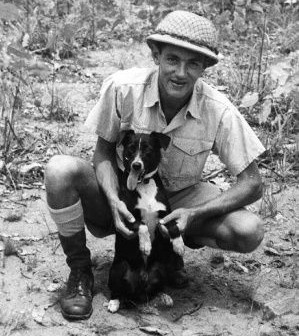 Japanese bombs started raining down on the capital city of Australia’s Northern Territory, Darwin, around 10 am on February 19, 1942, just over two months after the Japanese bombing of America’s Pearl Harbor. After the initial attack, which sunk eight ships and badly damaged 37 others, soldiers went looking for the injured among the rubble.
Japanese bombs started raining down on the capital city of Australia’s Northern Territory, Darwin, around 10 am on February 19, 1942, just over two months after the Japanese bombing of America’s Pearl Harbor. After the initial attack, which sunk eight ships and badly damaged 37 others, soldiers went looking for the injured among the rubble.
Under a destroyed mess hall, they found the smallest survivor of them all, a six-month-old male stray kelpie (an Australian sheep dog). He had a broken leg and was whimpering. Eventually, the injured pup ended up in the hands of Leading Aircraftman Percy Westcott. He made it his duty to get this dog help. Westcott took the dog to the doctor, who said he couldn’t treat any “man” who didn’t have a name or serial number. So, Westcott named the kelpie “Gunner” and gave him the number 0000. Satisfied, the doctor put a cast on Gunner’s leg and set them on their way.
From that point forward, Gunner and Westcott were inseparable. When Gunner’s leg began healing (despite his habit of chewing the cast), he would join Westcott on his daily tasks. One day not long after the attack, as the men worked on repairing several planes in the airfield, Gunner started barking and jumping up and down. The men paid no attention to the dog, but within a few minutes Japanese raiders swooped in and commenced shelling Darwin again.
Luckily, the men and Gunner managed to dive to safety, but it was another surprise attack. Well, to everyone but Gunner. In general, Australian Kelpie hearing, even more so than many other breeds of dogs, is fantastic. Two days later, Gunner again started making a commotion. This time, the men knew to find cover and prepare for the upcoming attack.
From February 1942 to November 1943, over sixty air raids were commenced on Darwin. Gunner warned the soldiers of nearly every one, saving countless lives. Another amazing aspect of this was that Gunner never barked when Australian planes took off or were returning. He was able to differentiate between Australian aircrafts and Japanese aircrafts. It is not known what happened to Gunner after the war.
Rip the Rescue Dog
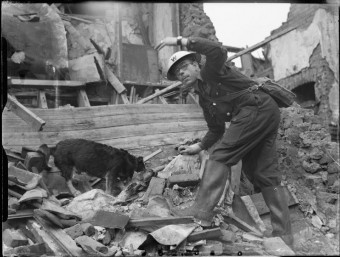 The Blitz commenced on London on September 7, 1940. For the next 57 days, German bombers enveloped the city in destruction. Right after a particular heavy shelling during one of the first days of the Blitz, an Air Raid Warden named E. King found a hungry stray walking the streets. He threw it some meat and the dog refused to go away. The dog followed King back to his post and, eventually, became something of a mascot. But Rip, as they called him, soon showed his worth beyond a simple mascot.
The Blitz commenced on London on September 7, 1940. For the next 57 days, German bombers enveloped the city in destruction. Right after a particular heavy shelling during one of the first days of the Blitz, an Air Raid Warden named E. King found a hungry stray walking the streets. He threw it some meat and the dog refused to go away. The dog followed King back to his post and, eventually, became something of a mascot. But Rip, as they called him, soon showed his worth beyond a simple mascot.
Rip came out with King after a bombing one night and his nose started twitching. Rip followed the scent to a collapsed building and started digging. What Rip found was a man, still alive, buried beneath. It was probably the best image this man had ever seen; a barking, sniffing mutt.
Despite never being formally trained, Rip became England’s first urban search and rescue dog. It was reported that he found and rescued over hundred people with his sensitive, life-saving nose. Due to Rip, today London’s police force and military trains hundreds of dogs per year to be part of their urban search and rescue teams.
In 1945, Rip was awarded the Dickin Medal for bravery, an honor bestowed animals for their service during war. On the medal, it reads “For Gallantry. We Also Serve.” Rip passed away in 1946 and is buried in Ilford Animal Cemetery in London.
Antis – The “German” Who Saved Frenchmen
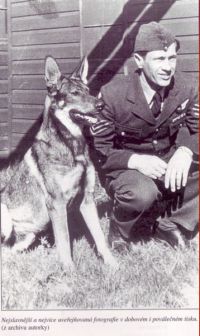 As French Air Force gunner Robert Bozdech came barreling toward Earth in his now-disabled plane, death was on his mind, not making a new best friend. But that is exactly what happened when he crashed landed in Northern France, ominously known as “No Man’s Land.” He, amazingly, emerged from the wreckage of his plane barely hurt, but heard sounds from a nearby farmhouse. Thinking it was the enemy, he took out his gun, ready to shoot. What emerged was a gray ball of fur, a German Shepard puppy. He took the pup in his leather jacket and hitched a ride back two hundred miles to St Dizier Air Base. Bozdech’s peers were stunned he was still alive, much less having a new best bud.
As French Air Force gunner Robert Bozdech came barreling toward Earth in his now-disabled plane, death was on his mind, not making a new best friend. But that is exactly what happened when he crashed landed in Northern France, ominously known as “No Man’s Land.” He, amazingly, emerged from the wreckage of his plane barely hurt, but heard sounds from a nearby farmhouse. Thinking it was the enemy, he took out his gun, ready to shoot. What emerged was a gray ball of fur, a German Shepard puppy. He took the pup in his leather jacket and hitched a ride back two hundred miles to St Dizier Air Base. Bozdech’s peers were stunned he was still alive, much less having a new best bud.
Antis, named so because Bozdech loved to fly Russian ANT dive-bombers, became not just a loyal friend, but a seasoned war veteran. Much like Gunner, he barked in warning about oncoming enemy fire. Just like Rip, he learned how to sniff and dig for survivors. Robert and his comrades also considered Antis a good luck charm and, most importantly, braver than many a human soldier. He would hide away in Bozdech’s gunner plane to ensure that he would be there to protect his pal. Antis would also run into enemy fire to notify others where the injured men were. He was even once injured himself, yet that didn’t stop him from performing his duties. Several days after being injured, he somehow snuck onto Bozdech’s plane as a stowaway.
After the war, Antis was also awarded the Dickin Medal and lived with Bozdech the rest of his life, passing away at the age of 14 in 1953.
Salty and Roselle Safely Guides on 9/11
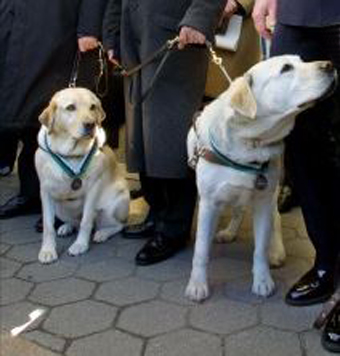 While 9/11 wasn’t necessarily during war, it was certainly an act of war and war-like situation. Salty and Roselle were both part of the Guiding Eyes for the Blind program in New York, but came upon their fates differently. Roselle was only one and half when she was introduced to Michael Hingson, the man she was to guide. Hingson had been blind since birth, but earned a masters in physics from the University of California. On September 11, 2001, he was working as a computer sales manager on the 78th floor of the World Trade Center Tower 1.
While 9/11 wasn’t necessarily during war, it was certainly an act of war and war-like situation. Salty and Roselle were both part of the Guiding Eyes for the Blind program in New York, but came upon their fates differently. Roselle was only one and half when she was introduced to Michael Hingson, the man she was to guide. Hingson had been blind since birth, but earned a masters in physics from the University of California. On September 11, 2001, he was working as a computer sales manager on the 78th floor of the World Trade Center Tower 1.
Roselle was asleep when the plane struck the 99th floor. Calmly and cooly, she guided Hingson, and several others in the office, down over 1400 hundred darkened stairs and out of the door. The whole escape took about an hour, but within moments of making it to the street, Tower 2 collapsed, sending debris everywhere. Roselle was struck by pieces, but she was unfazed and continued moving, just like she was trained to do.
As Hingson said,
She saved my life. While everyone ran in panic, Roselle remained totally focused on her job. While debris fell around us, and even hit us, Roselle stayed calm.
Salty had always loved fast-paced, city-living. When he was introduced to Omar Rivera, it was a perfect match. Rivera had gone blind due to glaucoma, but continued to work for New York’s Port Authority as a senior systems designer. He was working on the 71st floor of the World Trade Center Tower 1 on 9/11. Salty was lying next to Rivera when the plane hit. The whole building swayed, but Salty calmly got up, offered Rivera his guidance, and lead them down the stairs. At one point a co-worker, thinking the dog needed help, tried to take Salty’s leash, but he refused to leave his master’s side. They made it out the door and were two or three blocks away when the second tower collapsed.
Both Salty and Roselle were given the Dickin medal for their heroics despite all the chaos around them. Salty passed away in 2008 and Roselle in 2011. They are remembered as American heroes.
15 FASCINATING CELL PHONE RELATED FACTS YOU PROBABLY DIDN’T KNOW
1) The Name: “Cellular phones,” or more common today “cell phones,” get their name from the fact that areas served by towers are divided up into “cells.” The first use of the word “cellular” in this fashion was in 1977. The first documented use of the word “cell phone” was in 1984.
2) The First: On April 3, 1973, a Motorola employee, Martin Cooper, publicly demonstrated the world’s first handheld mobile phone by placing a call to Joel Engel, the head of research at AT&T’s Bell Labs using the phone. Engel and his team were Cooper’s chief rival and had also been attempting to make the world’s first handheld mobile phone. As Cooper stated, “As I walked down the street while talking on the phone, sophisticated New Yorkers gaped at the sight of someone actually moving around while making a phone call. Remember that in 1973, there weren’t cordless telephones, let alone cellular phones. I made numerous calls, including one where I crossed the street while talking to a New York radio reporter – probably one of the more dangerous things I have ever done in my life.”
3) The Phone: This first handheld cell phone weighed 2.4 pounds and was 9 x 5 x 1.75 inches in size. For reference, the iPhone 6 is 5.44 x 2.64 x 0.27 inches and weighs just 129 grams (0.28 pounds) This first handheld cell phone also had only 20 minutes of battery life when talking, but as Martin Cooper stated “that wasn’t really a big problem because you couldn’t hold that phone up for that long.” Once the phone battery was drained, it took approximately 10 hours to charge back up fully.
4) The Fanboys: Although Apple’s iPhones generally receive the most hype and publicity, world-wide approximately 88.3% of all mobile phones in use today are not iPhones. Further, Android is king by far in terms of OS used on smart phones with a whopping 84.7% market share according to Business Insider (August 15, 2014).
5) The Fear: The fear of having no cell phone signal or otherwise being unable to make or receive cell phone calls is called Nomophobia.
 6) The Phalanges: The fingers you use to interact with your cell phone don’t actually contain any muscles, at least not ones used to move fingers. (Technically fingers contain many tiny arrector pili muscles, but these have nothing to do with movement of fingers, but rather are attached to hair follicles and can make the hairs on your fingers stand out straight.)
6) The Phalanges: The fingers you use to interact with your cell phone don’t actually contain any muscles, at least not ones used to move fingers. (Technically fingers contain many tiny arrector pili muscles, but these have nothing to do with movement of fingers, but rather are attached to hair follicles and can make the hairs on your fingers stand out straight.)
So if there are no muscles in our fingers to move them, how do they move? Short answer: magic… err, tendons and ligaments. Longer answer: Each finger consists of three bones (phalanges). In our bodies, tendons generally connect muscle to bone, and ligaments generally connect bone to bone. The tendons that control the bones in our fingers are attached to 17 muscles in the palm of your hand and 18 in your forearm, with none of the muscles extending into the fingers.
7) The Texts: Over 9 trillion text messages were sent in 2013. That equates to about 1,200 text messages per person on the planet per year. However, text messaging numbers are starting to decline as people more and more use apps like WhatsApp, iMessage, etc. to communicate. Further, the number of text messages still pales in comparison to the number of emails sent per year, which is estimated at over 100 trillion.
8) The Fastest: According to the Guinness World Records, the current fastest texter in the world is Sonja Kristiansen of Norway who was able to text the following message in 37.28 seconds (fastest to date): “The razor-toothed piranhas of the general Serrasalmus and Pygocentrus are the most ferocious freshwater fish in the world. In reality, they seldom attack a human.” If you can beat that time, you might want to give Guinness World Records a call.
9) The Antiques: A type of car based non-handheld mobile phone has been around since the 1940s, but was more a novelty item than practical and generally needed significant enough power that you could only use one with the engine running.
 10) The Myth: Contrary to popular belief, cellphones used in a normal way do not create enough electromagnetic interference to cause problems with hospital equipment. It was once thought that they created false alarms, incorrect equipment readings, and subsequent errors in treatment. This myth was based on a highly publicized study done in 1993 that offered no actual direct evidence that this was happening, just several doctor’s suspicions that it was happening. An actual scientific study by the Mayo Clinic in 2005 busted this myth, as did another done in 2007. Not only this, but, funny enough, according to a survey of anesthesiologists, having a cell phone to use while treating patients resulted in about 22% fewer medical errors than when they had to delay communicating with someone about something pertaining to their patient.
10) The Myth: Contrary to popular belief, cellphones used in a normal way do not create enough electromagnetic interference to cause problems with hospital equipment. It was once thought that they created false alarms, incorrect equipment readings, and subsequent errors in treatment. This myth was based on a highly publicized study done in 1993 that offered no actual direct evidence that this was happening, just several doctor’s suspicions that it was happening. An actual scientific study by the Mayo Clinic in 2005 busted this myth, as did another done in 2007. Not only this, but, funny enough, according to a survey of anesthesiologists, having a cell phone to use while treating patients resulted in about 22% fewer medical errors than when they had to delay communicating with someone about something pertaining to their patient.
11) The Most: The top 5 countries in the world with the most currently active cell phones are: China: 1.2 billion phones; India: 904 million phones; U.S. 327 million phones; Brazil: 276 million phones; and Russia: 256 million phones. That said, the highest number of active phones per person for a country is Montenegro at 192.5% or nearly two phones per person. The runner up on that list is Hong Kong at 187.9%.
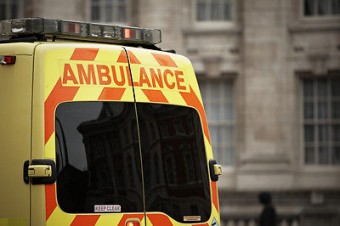 12) The Problem: Cell and VoIP phones have introduced some new problems to the old 9-1-1 and Enhanced 9-1-1 system, namely trying to figure out where the person in question is making the phone call from. For cell phones, the FCC requires very strict location parameters either via GPS tracking of the cell phone or by cell network location. In the former case, it needs to be accurate to within 150 meters for a minimum of 90% of the 9-1-1 calls and within 50 meters for a minimum of 67% of the calls. In the latter network location case, it needs to be accurate to within 300 meters for 90% of the calls and 100 meters for 67% of the calls. It is expected that over time the FCC will continue to require these systems to be more and more accurate.
12) The Problem: Cell and VoIP phones have introduced some new problems to the old 9-1-1 and Enhanced 9-1-1 system, namely trying to figure out where the person in question is making the phone call from. For cell phones, the FCC requires very strict location parameters either via GPS tracking of the cell phone or by cell network location. In the former case, it needs to be accurate to within 150 meters for a minimum of 90% of the 9-1-1 calls and within 50 meters for a minimum of 67% of the calls. In the latter network location case, it needs to be accurate to within 300 meters for 90% of the calls and 100 meters for 67% of the calls. It is expected that over time the FCC will continue to require these systems to be more and more accurate.
A shift to cell phone usage has introduced the possibility of texting 9-1-1 to receive help. While the system is still being rolled out, many carriers such as AT&T, Sprint, T-Mobile, and Verizon now support this and it is expected that all will support it by December 31, 2014. To get around the problem of the individual sending the text knowing whether the texting 9-1-1 system is available in their area, if you send one where this isn’t available yet, you should receive an automatic response text message telling you it’s not available.
13) The Gap: It was a full 10 years after public demonstration of the first handheld cell phone in 1973 before the first commercial handheld cell phone, the DynaTAC 8000x (“Dynamic Adaptive Total Area Coverage”), hit the market on March 6, 1983. This phone weighed “only” 1.1 pounds, had 30 minutes of battery life (8 hours of standby), and was initially priced at $3,995, which is about $9300 today. It took another seven years to reach one million cell phone subscribers, hitting that figure in 1990. Today, billions of phones are currently in use and there are far more handheld mobile phone subscribers than there are wired phone subscribers.
 14) The Law: Martin Cooper also has a “law” named after him. Cooper’s Law states that our technology is advancing at such a rate that the number of different wireless communications possible in one location, at the same time will double every 30 months. This “law” has held true since the first transmission by Guglielmo Marconi in 1895. To illustrate, due to the method of transmitting this first signal, with a spark gap transmitter, it took up most of the radio spectrum to send this signal. So the technology at that time more or less just allowed for one signal to be sent at any given time at a certain location. Further, given the number of square miles Marconi’s first transmitter blanketed, only about 50 separate signals could have been sent at one time on the entire planet without interfering with one another. Since then, every 30 months, the number of signals that can be transmitted at one time in one location has approximately doubled.
14) The Law: Martin Cooper also has a “law” named after him. Cooper’s Law states that our technology is advancing at such a rate that the number of different wireless communications possible in one location, at the same time will double every 30 months. This “law” has held true since the first transmission by Guglielmo Marconi in 1895. To illustrate, due to the method of transmitting this first signal, with a spark gap transmitter, it took up most of the radio spectrum to send this signal. So the technology at that time more or less just allowed for one signal to be sent at any given time at a certain location. Further, given the number of square miles Marconi’s first transmitter blanketed, only about 50 separate signals could have been sent at one time on the entire planet without interfering with one another. Since then, every 30 months, the number of signals that can be transmitted at one time in one location has approximately doubled.
 15) The Droids You’re Looking For:The word “droid” is a registered trademark of Lucasfilm Ltd. Shortly before Verizon launched their “DROID” line of mobile devices, Lucasfilm Ltd. swept in and filed a trademark on October 9, 2009 for the term “Droid”. Specifically claiming the term for: “Wireless communications devices, including, mobile phones, cell phones, hand held devices and personal digital assistants, accessories and parts therefor, and related computer software and wireless telecommunications programs; mobile digital electronic devices for the sending and receiving of telephone calls, electronic mail, and other digital data, for use as a digital format audio player, and for use as a handheld computer, electronic organizer, electronic notepad, and digital camera; downloadable ring tones and screen savers; cameras, pagers and calling cards.” As a result of this, Verizon pays Lucasfilm Ltd. an undisclosed sum for the rights to use this word as a brand name.
15) The Droids You’re Looking For:The word “droid” is a registered trademark of Lucasfilm Ltd. Shortly before Verizon launched their “DROID” line of mobile devices, Lucasfilm Ltd. swept in and filed a trademark on October 9, 2009 for the term “Droid”. Specifically claiming the term for: “Wireless communications devices, including, mobile phones, cell phones, hand held devices and personal digital assistants, accessories and parts therefor, and related computer software and wireless telecommunications programs; mobile digital electronic devices for the sending and receiving of telephone calls, electronic mail, and other digital data, for use as a digital format audio player, and for use as a handheld computer, electronic organizer, electronic notepad, and digital camera; downloadable ring tones and screen savers; cameras, pagers and calling cards.” As a result of this, Verizon pays Lucasfilm Ltd. an undisclosed sum for the rights to use this word as a brand name.
Sunday 4 October 2015
Science
| No. | Question | Answer |
| 01 | The theory of relativity was propounded by | Albert Einstein |
| 02 | The principal metal used in manufacturing steel is | Iron |
| 03 | An alimeter is used for measuring | Altitude |
| 04 | Oology is the study of | Birds eggs |
| 05 | Radioactivity was discovered by | Henry Bacquerel |
| 06 | The metal used in storage batteries is | Lead |
| 07 | The instrument used to measure the relative humidity of air is | Hygrometer |
| 08 | Barometer was invented by | Torricelli |
| 09 | The unit of power is | Watt |
| 10 | Radium was discovered by | Marie and Pierrie Curie |
| 11 | The existence of isotopes was discovered by | Frederick Soddy |
| 12 | Dynamo was invented by | Michael Faraday |
| 13 | The nuclear reactor was invented by | Enrico Ferni |
| 14 | The law of gravitation was propounded by | Sir Isaac Newton |
| 15 | Crescograph was invented by | J.C.Bose |
| 16 | Crescograph is used to measure the | Rate of growth of a plant |
| 17 | Galileo's first scientific discovery was | Pendulum |
| 18 | Microscope was invented by | Aaton Van Leewen Hock |
| 19 | The scientist who is known as father of modern biology is | Aristotle |
| 20 | The first person to see a cell under microscope was | Robert Hooke |
| 21 | The smallest flowering plant is | Worffia |
| 22 | The four blood groups were discovered by | Karl Landsteiner |
| 23 | Sodium was discovered by | Sir Humphry Davy |
| 24 | The atomic number of oxygen is | Eight |
| 25 | The basic building blocks of proteins are | Amino acids |
| 26 | The botanical name of the cotton plant is | Gossipium Hirsutum |
| 27 | An Electroscope is used to | Detect charges on a body |
| 28 | The unit of loudness is | Phon |
| 29 | An ammeter is used to measure | Electric current |
| 30 | Plant that eat insects are called | Insectivorous plants |
| 31 | Fruits that are formed without fertilization are called | Parthenocarpic |
| 32 | Plants that flower only once in their lifetime are called | Mono carpic |
| 33 | The botanical name for rice is | Oryza Sativa |
| 34 | Penicillin is obtained from | Mould |
| 35 | The largest tree in the world is | Seguoia Gigantica |
| 36 | Herpetology is the study of | Reptiles |
| 37 | Entomology is the study of | Insects |
| 38 | Ornithology is the study of | Birds |
| 39 | Ichtyology is the study of | Fishes |
| 40 | Osteology is the study of | Bones |
| 41 | The botanical name for brinjal is | Solanum melongenal |
| 42 | The botanical name for onion is | Allium Cepa |
| 43 | The study of sound is called | Acoustics |
| 44 | The study of heavenly bodies is called | Astronomy |
| 45 | The study of tissues is called | Histology |
| 46 | Electric Lamp was invented by | Thomas alva Edison |
| 47 | The fear of crowd is called | Ochlophobia |
| 48 | The fear of books is called | Bibliophobia |
| 49 | The fear of going to bed is called | Clinophobia |
| 50 | The symbol of gold is | Au |
| 51 | The symbol of sodium is | Na |
| 52 | The symbol of Sr stands for | Strontium |
| 53 | The symbol Rb stands for | Rubidium |
| 54 | The symbol Md stands for | Mendelevium |
| 55 | Calcium sulphate is commonly called | Plaster of Paris |
| 56 | Sodium carbonate is commonly called | Washing Soda |
| 57 | Sodium chloride is commonly known as | Common Salt |
| 58 | The chemical name of Chloroform is | Trichloromethane |
| 59 | The chemical name of baking powder is | Sodium bicarbonate |
| 60 | The chemical name of bleaching powder is | Calcium hypochlorite |
| 61 | The formula HCL stands for | Hydrochloric Acid |
| 62 | The formula H2SO4 stands for | Sulphuric Acid |
| 63 | The formula CHCI3 stands for | Trichloromethane |
| 64 | The formula H2O2 stands for | Hydrogen peroxide |
| 65 | A fungus which can only survive on other living organisms is called | Obligate Parasite |
| 66 | A plant which lives in the dark is called | Scotophyte |
| 67 | A plant adapted to live in dry places is called a | Xerophyte |
| 68 | A plant adapted for growth in water is called a | Hydrophyte |
| 69 | Bifocal lens was invented by | Benjamin Franklin |
| 70 | Cement was invented by | Joseph Aspdin |
| 71 | Laser was invented by | Dr.Charles H.Townes |
| 72 | Electromagnet was invented by | William Sturgeon |
| 73 | Rayon was invented by | Sir Joseph Swann |
| 74 | Thermostat is an instrument used for regulating | Constant temperature |
| 75 | The science of organic forms and structures is known as | Morphology |
| 76 | Phycology is the study of | Algae |
| 77 | Tata Institute of Fundamental Research was established in | 1945 |
| 78 | CSIR stands for | Council of Scientific and Industrial Research |
| 79 | ISRO stands for | Indian Space Research Organisation |
| 80 | The first human being to land on moon was | Neil Armstrong |
| 81 | The first Indian in space was | Rakesh Sharma |
| 82 | ISAC stands for | ISRO Satellite Centre |
| 83 | VSSC stands for | Vikram Sarabhai space Centre |
| 84 | The headquarters of ISRO is located at | Bangalore |
| 85 | VSSC is located at | Thiruvananthapuram |
| 86 | ISAC is located at | Bangalore |
| 87 | National Science Centre is located at | New Delhi |
| 88 | Central Tobacco Research Institute is located at | Rajahmundry |
| 89 | Indian Institute of Horticultural Research is located at | Bangalore |
| 90 | The Atomic Energy Commission was set up in | August 1948 |
| 91 | The first Indian Satellite was | Aryabhatta |
| 92 | The first Indian Satellite was launched in the year | 1975 |
| 93 | ASLV stands for | Augmented Satellite Launch Vehicle |
| 94 | INSAT stands for | Indian National Satellite |
| 95 | The fear of women is known as | Gynophobia |
| 96 | The fear of men is known as | Androphobia |
| 97 | The scientist who developed the Quantum theory was | Max Plonck |
| 98 | The steam engine was invented by | James Watt |
| 99 | The botanical name of tea is | Camellia Sinensis |
| 100 | Logarithms were devised by | John Napier |
| 101 | The acid used in a car battery is | Sulphuric acid |
| 102 | The system for writing by blind people was invented by | Louis Braille |
| 103 | The parachute was used for the first time by | J.P.Blanchard |
| 104 | The German physicit who first demonstrated the existence of Radio waves was | Henrich Hertz |
| 105 | The instrument that records the intensity of earthquakes is | Seismograph |
| 106 | The laws of floating bodies was discovered by | Archimedes |
| 107 | The density of milk is measured by a | Lactometer |
| 108 | Fountain pen was invented by | L.E.Waterman |
| 109 | The instrument used to measure the pressure of gases is the | Monometer |
| 110 | Bhaskara I was a famous | Astronomer |
| 111 | The first atomic power station established in India was the | Tarapore Atomic Power Station |
| 112 | The role of heredity was demonstrated by | Mendel |
| 113 | The instrument used to measure the concentration of salt water is the | Salinometer |
| 114 | Spectroscopy is the study of | Anders John Angstrom |
| 115 | Dactylography is the study of | Finger Prints |
| 116 | A tangent galvanometer is used to study the | Strength of direct current |
| 117 | The fruit of Oak is called | Acron |
| 118 | ZETA stands for | Zero Energy Thermonuclear Assembly |
| 119 | The formula C6H5OH stands for | Phenol |
| 120 | Michael Faraday worked as an assistant under another scientist whose name was | Sir Humphry Davy |
| 121 | Vulcanised rubber was invented by | Charles Goodyear |
| 122 | The symbol Zn stands for | Zinc |
| 123 | The symbol He stands for | Helium |
| 124 | Celluloid was invented by | A.Parker |
| 125 | Glider was invented by | Sir George Caley |
| 126 | Safety matches was invented by | J.E.Lundstrom |
| 127 | Radio valve was invented by | Sir J.A.Fleming |
| 128 | Space Applications Centre is located at | Ahmedabad |
| 129 | Atomic Energy Commission is located at | Mumbai |
| 130 | Dynamics is the study of | Movements of bodies |
| 131 | Statics is the study of | Forces acting on bodies at rest |
| 132 | Mechanics is the study of | Forces acting on bodies |
| 133 | Zoology is the study of | Animal life |
| 134 | Botany is the study of | Plant life |
| 135 | Psychology is the study of | Human mind |
| 136 | The first American to orbit earth was | John H.Glen |
| 137 | The electro-cardiograph was invented by | William Einthoven |
| 138 | The molecular formula of cane sugar is | C12H22O11 |
| 139 | A compound which contains only hydrogen and Carbon is called a | Hydrocarbon |
| 140 | The liquid used to preserve specimens of plans and animals is | Formalin |
| 141 | The law of segregaton was propounded by | Mendel |
| 142 | Auriscope is used to detect | Ear disorders |
| 143 | The three states of matter are | Solid,liquid and gas |
| 144 | The scientific name for blood platelets is | Thrombocytes |
| 145 | The response of a plant to heat is called | Thermotropism |
| 146 | The response of a plant to touch is called | Trigmotropism |
| 147 | The symbol Zr stands for | Zirconium |
| 148 | Nickel was discovered by | Cronstledt |
| 149 | Manganese was discovered by | Gahn |
| 150 | The common name for pottasium carbonate is | Potash |
12 INTERESTING FACTS YOU PROBABALY DIDN’T KNOW ABOUT EBAY
This is a sponsored post written by me on behalf of eBay for IZEA. All opinions are 100% mine.
We recently published a couple “Fascinating Cell Phone Related Facts” lists, which you can findhere and here, on eBay who is currently running a cell phone selling challenge. Basically, if you’re looking to upgrade your cell phone, they’ll help you sell your old one and they also have great deals on buying brand new ones, such as the iPhone 6. Where does the challenge come in? They’re challenging you to sell your old phone on eBay and they’re so sure your old phone will sell (returning up to $200 more for your current previous generation phone), that they’ll give you a $100 eBay coupon if it doesn’t, assuming you list the phone between now and October 24th (restrictions apply obviously). So if you’re looking to buy or sell a cell phone visit: eBay For The Win for details on the offer and list your phone today.
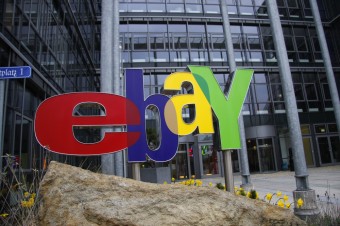 1) One of the first items sold on eBay shortly after its launch in early September of 1995 was a broken laser pointer. When eBay creator, Pierre Omidyar, emailed the person who bought the broken laser pointer for $14.83 ($22.40 today) to make sure he knew it was broken, the man told him “I’m a collector of broken laser pointers.” Other early items sold on eBay included an autographed pair of Marky Mark (aka, Mark Wahlberg) underwear, which sold for $400, a Toyota Tercel ($3,200), and a superman lunchbox ($22).
1) One of the first items sold on eBay shortly after its launch in early September of 1995 was a broken laser pointer. When eBay creator, Pierre Omidyar, emailed the person who bought the broken laser pointer for $14.83 ($22.40 today) to make sure he knew it was broken, the man told him “I’m a collector of broken laser pointers.” Other early items sold on eBay included an autographed pair of Marky Mark (aka, Mark Wahlberg) underwear, which sold for $400, a Toyota Tercel ($3,200), and a superman lunchbox ($22).
2) While eBay is generally associated with auctions, in fact the majority of items (over 70%) purchased there today are via “New/Buy It Now.”
3) When it was first created, eBay wasn’t called eBay, but rather AuctionWeb. The original look for the site was very similar to Craigslist today. (Aside: If you’re curious: Who is Craig from Craigslist?) So why is it called eBay today? AuctionWeb was simply one of four sites Omidyar ran under his eBay Internet, a domain he’d purchased well before ever coming up with AuctionWeb. He originally wanted to call this “EchoBay,” but the domain was already taken by a Canadian mining company, so he shortened it. The other things you could find under the eBay umbrella were a page on the Ebola virus, a small travel agent site, and a personal shopper site. Within seven months of launching AuctionWeb, revenues coming in were out earning Omidyar’s day job at General Magic, so he quit to devote himself full time to his little side project. About a year and a half later, general users and many in the press had been calling it “eBay,” instead of AuctionWeb, so he switched the name. At the same time that happened in September of 1997, he also switched the look of the site to be much more graphically based.
4) British singer-songwriter James Hillier Blount, aka James Blunt, once auctioned his sister off on eBay. Why? He later stated in an interview with GQ, “I came back to the flat where my sister was staying and she was crying because she couldn’t get to a funeral in Ireland. The planes were on strike, the ferry was out of season, and there were no trains… I ended up whacking it on eBay: ‘Damsel in distress seeks knight in shining armor! Desperate to get to a funeral in southern Ireland, please help!’ The bids flooded in and the guy who won had a helicopter.” The story gets even better though. Blunt stated, “That was three years ago. This summer they’re getting married.”
5) In recent years, mobile purchases on eBay have soared with one of the most expensive items to date purchased via a mobile device being a $265,000 PA-46-310P Malibu airplane.
6) The Town of Buford, Wyoming was sold on eBay for $900,000. Considered one of the nation’s smallest towns, Buford is located in southeastern Wyoming between Cheyenne and Laramie on the Interstate 80 and consists of 10 acres with a convenience store, gas station, and modular home. The town was first founded during the construction of the Transcontinental Railroad in Wyoming and at one point boasted a population of about 2,000 people, mostly railroad workers. However in 1980, when Don Sammons first moved in with his wife Terry and their son from Los Angeles, they made up the whole population. After the death of his wife, Sammons bought the entire town in 1992. He ran Buford’s only General/ Hardware/ Liquor Store and gas station. He was also considered the town’s mayor. His son moved away in 2007, making Don Sammons the only resident of the town. In April of 2012, at age 61 Don decided to retire and move closer to his son in Colorado, putting the town of Buford up for auction on eBay. The online auction of the town created a lot of buzz, with people from 46 countries reported to have viewed and bid on it. In 11 minutes, it sold to two Vietnamese buyers, who had always dreamed of owning land in the U.S.
7) Before the retirement of the space shuttles, NASA used eBay and other similar sites to acquire things like old Intel 8086 chips and floppy disk drives that are no longer being made, but were essential to keeping the space shuttle support hardware working. Without those parts, the shuttles would have been forced to be grounded while NASA created extremely expensive redesigns of certain of their systems, which they ultimately were working on, such as a $20 million replacement for the booster automated checking system using more modern technology.
8) The most expensive item to date ever sold on eBay was a $168 million, 405-foot yacht in 2006, purchased by Russian billionaire Roman Abramovich. However, the auction technically ended at $85 million, but was just for the down payment on the yacht according to the Fort Lauderdale brokerage firm that handled the final details of the sale. So I guess they probably didn’t use Paypal. ![]()
9) The second most expensive thing sold on eBay to date was one of Tyler Jet’s Gulfstream II private jets, with the winning bidder paying $4.9 million.
10) When eBay went public with a suggested price of $18 per share (but ultimately surged to $53.50 on the first day), the 30 employees of the company at the time did a conga line around the office. The biggest recipients of that public offering were Omidyar, who today is worth about $8.7 billion, and the first CEO of the company, Meg Whitman, who has a net worth of just under $2 billion today.
11) While eBay got its start in America, it is Britain that currently buys more items per capita on eBay than any other nation.
12) A new species of sea urchin was discovered on eBay in 2004 and something similar happened in 2008. In both cases, this was when someone listed the items (sea urchin and an insect of a previously unknown species encased in amber some 40-50 million years ago) on eBay for sale. In the latter case, the British scientist who bought it, Richard Harrington, attempted to have the name for the thing be Mindarus ebayici, but ultimately this was rejected and it was named Mindarus harrintoni.
Once again, don’t forget to check out the eBay cell phone challenge.
THE RICHEST PEOPLE BY CENTURY
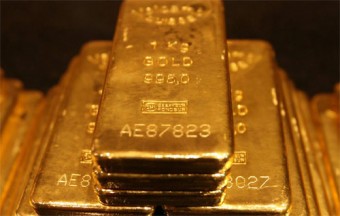 Wealth transcends time. It is also extremely hard to evaluate. There have been more than a few studies and lists that have tried to figure out who are the richest people of all time. This task has been proven to be nearly impossible. Accurately adjusting for inflation is just one obstacle. It is very hard to account for what made up wealth throughout history in terms of valuing goods and the like, and what was used as currency has also varied throughout time, with valuing that presenting its own difficulties. Additionally, records and accounting have been lost. All we have to go on to determine who the wealthiest people are from hundreds of years ago are stories, legends, and other such written accounts.
Wealth transcends time. It is also extremely hard to evaluate. There have been more than a few studies and lists that have tried to figure out who are the richest people of all time. This task has been proven to be nearly impossible. Accurately adjusting for inflation is just one obstacle. It is very hard to account for what made up wealth throughout history in terms of valuing goods and the like, and what was used as currency has also varied throughout time, with valuing that presenting its own difficulties. Additionally, records and accounting have been lost. All we have to go on to determine who the wealthiest people are from hundreds of years ago are stories, legends, and other such written accounts.
That being said, the question was asked and we aim to please, so this is our best attempt at a “richest person” list. We chose to organize it by century, dating back to the 11th century, as much accuracy any further back becomes an effort in futility, not only accounting for the lack of good records, but when attempting to adjust the currency amounts to modern values as we have done below. Also note, this author took the liberty of associating the person with the century that they were at the “height of their wealth,” since many people lived during two centuries. Feel free to quibble with any on this list in the comments below; any alternate suggestions would also be interesting to read in case we missed someone in our research.
Without further ado….
11th century
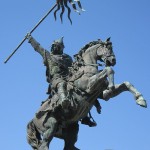 William the Conqueror – Worth approximately $230 billion dollars (in today’s dollars)
William the Conqueror – Worth approximately $230 billion dollars (in today’s dollars)
There is some thought that due to the vast natural resources and the power over gold trade at the time, that King Tenkamenin of Ghana should be considered the richest man of the 11th century. However, when looking into it further, it seems there is more legend and association than anything else, so we will go with the more concrete choice of William the Conqueror, the Norman King of England. He earned his wealth the old fashioned way – by pillaging. When he was King, he also built many enormous castles across England, several of which still stand today.
12th century
Due to incomplete and lost records, it was tough to determine who was truly the wealthiest person alive in the 12th century. But signs point to the famed Genghis Khan. His empire stretched into Southern Europe, which may have been more than four billion acres of land. The treasures, gold, and valuables he plundered while taking this land were enormous. Despite all of this, there is the legend that he lived in a tent. Conquering and humiliating his enemies it would seem, not necessarily garnering wealth, is what drove him.
13th century
Filippo di Amedeo de Peruzzi – Worth approximately $100 billion to $200 billion
There is a case that could be made for Genghis Khan’s grandson, Kublai, but other sources point to the wealthiest banker in the world’s wealthiest city of Florence, Italy. Filippo di Amedeo de Peruzzi and his family underwrote businesses, owned ships, ran hotels, and stockpiled gold, spices, and jewelry. In fact, Peruzzi was so wealthy that monarchs and popes asked HIM for loans. Even when Flippo passed away in 1303, his family continued the business – to the point that 150 years later, they loaned Edward III of England money to finance the Hundred Years’ War. When he couldn’t pay back his loan, much of the Peruzzis’ wealth was lost. They were also kicked out of Florence by the victorious King of France.
14th century
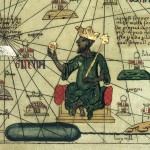 Mansa Musa I – Worth approximately $400 billion
Mansa Musa I – Worth approximately $400 billion
The richest person in history wasn’t Bill Gates or John D. Rockefeller, but the 14th century ruler of West Africa’s Malian Empire (covering modern-day Ghana, Timbuktu, and Mali), Mansa Musa. The vast natural resources of the region, which included salt and gold, contributed to his enormous wealth. He built numerous gold-plated mosques, a few also still stand today.
The 14th century actually has several people that dot the list of “wealthiest people in history,” including Richard FitzAlan (worth $118 billion) and John of Gaunt (worth $110 billion, despite the question of English royalty hanging over his head).
15th century
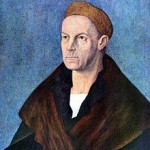 Jakob Fugger – Worth approximately $60 to $275 billion
Jakob Fugger – Worth approximately $60 to $275 billion
Fugger was another bank man, who loaned out money to Charles V to ensure that he got “elected” as the Holy Roman Emperor. In turn, Charles V gave Fugger the right to mint his own money. Yes, he was so rich he could literally make money. The reason the exact value is in such a wide range is due to the unknown value of the vast properties and merchant fleets he owned. Either way, he was known to many as “Jakob the Rich,” which probably tells you all you need to know.
16th century
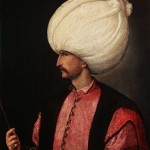 Suleiman the Magnificent – Worth unknown
Suleiman the Magnificent – Worth unknown
As ruler of the great and vast Ottoman Empire, Suleiman’s wealth could be measured in power, land, gold, jewels, and apparently giant hats. But some measured his wealth in the number of women in his harem, which was rumored to go beyond two thousand. Suleiman was the longest-reigning monarch of the Ottoman Empire, which was at its height during his rule. By many accounts, he was also a big fan of social reform and protected his subjects by enacting anti-discrimination laws that prevented unfair treatment based on blood lines. It just goes to show that all rich guys in history weren’t elitist jerks.
17th century
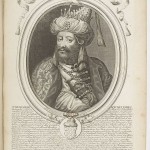 Aurangzeb – Worth (rumored) approximately $19 billion
Aurangzeb – Worth (rumored) approximately $19 billion
He became ruler of India when he won the “War of Succession” over his three brothers and threw his father in jail, though supposedly did not mistreat him beyond that. It was said he made about $38 million in tributes, so over the 49 years of his reign, that is about $19 billion dollars today, give or take. In other words, he was worth about ten times the amount of his European contemporary, Louis XIV of France.
18th century
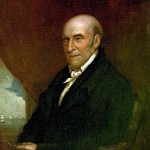 Stephen Girard – Worth approximately $105 billion
Stephen Girard – Worth approximately $105 billion
This was a tough century because several moguls amassed their wealth in the 18th century, but continued to accumulate into the 19th century. The French-born, naturalized American who personally underwrote and saved America from financial collapse during the War of 1812 seems as a good of a choice as any. He owned many ships and fleets, making him responsible for most of the trade that came into the major of ports of late 18th century America. Considered the fourth-richest American ever, he had no children and left much of his money to his adopted hometown of Philadelphia.
19th century
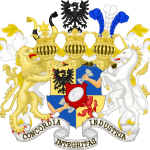 The Rothschild family – Worth approximately $350 billion
The Rothschild family – Worth approximately $350 billion
As a family of London-based bankers, this fortune can not be attributed to one person (though Nathan Mayer was the wealthiest of the four original brothers). It all began with them helping to finance the Napoleonic Wars (1803-1815), which led to their first billion. From that point on, they (combined) likely amassed the largest private fortune in modern history. This dynasty continues to this day in Europe with valuable real estate and energy investments, with some economists believing the Rothschild family wealth actually totals one trillion dollars combined.
20th century
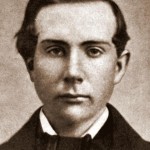 John D. Rockefeller – Worth approximately$340 billion
John D. Rockefeller – Worth approximately$340 billion
As the 19th century turned into the 20th century, the greatest commodity in the world wasn’t land or people or harems, but oil. And J.D. Rockefeller was an oil man who reaped the rewards of it. He is generally considered to have been around the third richest man ever (when normalizing for inflation). As the head of Standard Oil, there was a point where he oversaw over ninety percent of the world’s oil production. If that wasn’t enough, in 1911, when the Sherman Antitrust Act broke up Standard Oil into 34 separate companies, Rockefeller actually made an extra $900 million. All in a rich guy’s day of work.
21st century
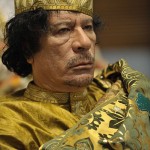 Muammar Gaddafi – Worth approximately $200 billion
Muammar Gaddafi – Worth approximately $200 billion
We are only 14 years into the century, but the richest person of the 21st century is considered to be about the eighth richest person in all of history, give or take. And it isn’t Bill Gates or Warren Buffett. Libyan dictator Muammar Gaddafi ruled over an oil rich country for 34 years before being ousted and, then, killed. Upon his death, much to the surprise of many, billions upon billions of dollars were found in various accounts of his across the globe. In the few years since his death, so far nearly $200 billion dollars have been found in secret bank accounts, real estate holdings, and other investments. No matter whether he acquired it legally or not, money is money and Gaddafi secretly had the most of any known person so far this century.
